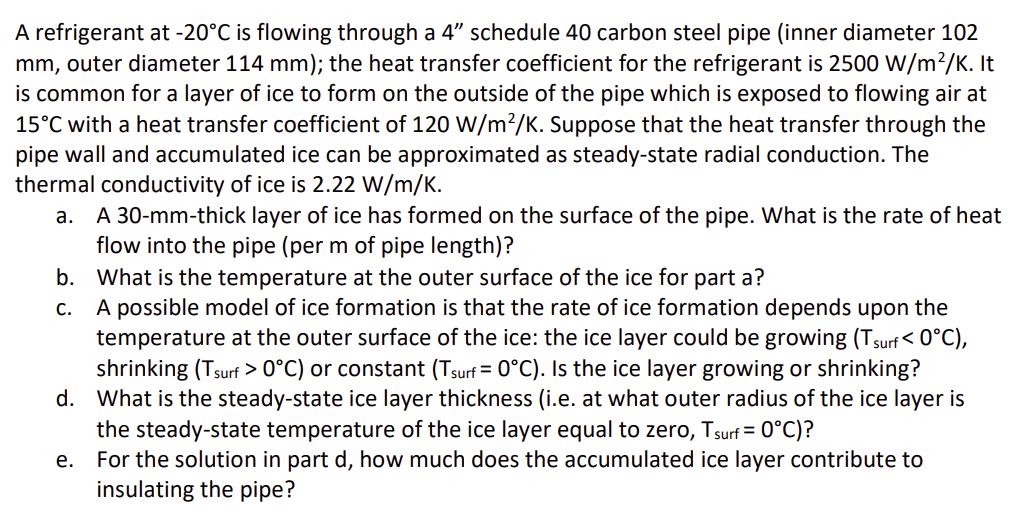Answered step by step
Verified Expert Solution
Question
1 Approved Answer
A refrigerant at -20C is flowing through a 4 schedule 40 carbon steel pipe (inner diameter 102 mm, outer diameter 114 mm); the heat

A refrigerant at -20C is flowing through a 4" schedule 40 carbon steel pipe (inner diameter 102 mm, outer diameter 114 mm); the heat transfer coefficient for the refrigerant is 2500 W/m/K. It is common for a layer of ice to form on the outside of the pipe which is exposed to flowing air at 15C with a heat transfer coefficient of 120 W/m/K. Suppose that the heat transfer through the pipe wall and accumulated ice can be approximated as steady-state radial conduction. The thermal conductivity of ice is 2.22 W/m/K. a. A 30-mm-thick layer of ice has formed on the surface of the pipe. What is the rate of heat flow into the pipe (per m of pipe length)? b. What is the temperature at the outer surface of the ice for part a? c. A possible model of ice formation is that the rate of ice formation depends upon the temperature at the outer surface of the ice: the ice layer could be growing (T surf 0C) or constant (Tsurf = 0C). Is the ice layer growing or shrinking? d. What is the steady-state ice layer thickness (i.e. at what outer radius of the ice layer is the steady-state temperature of the ice layer equal to zero, Tsurf = 0C)? e. For the solution in part d, how much does the accumulated ice layer contribute to insulating the pipe?
Step by Step Solution
There are 3 Steps involved in it
Step: 1
To solve this problem we can use the principles of steadystate radial conduction and apply them to the pipe and ice layer system Well follow the steps outlined below a The rate of heat flow into the p...
Get Instant Access to Expert-Tailored Solutions
See step-by-step solutions with expert insights and AI powered tools for academic success
Step: 2

Step: 3

Ace Your Homework with AI
Get the answers you need in no time with our AI-driven, step-by-step assistance
Get Started


